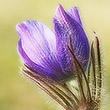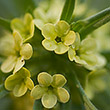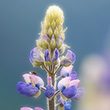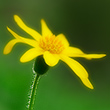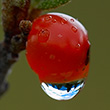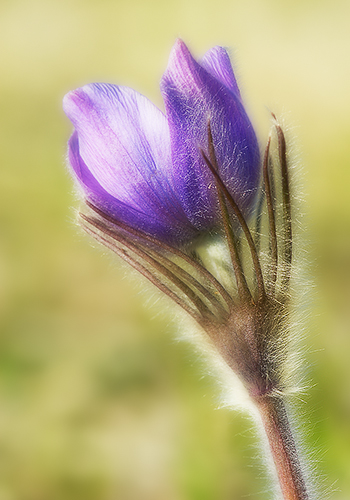
Availability: Limited Edition Print; RM Stock (??)
In the Field
Prairie Crocus: Early Bloomer. Findlay Creek, BC, Canada. April 24, 2006.
Prairie Crocuses are among the earliest flowers to bloom in the East Kootenays of British Columbia - not long after the snow has left you can find thousands of these pretty lavender-coloured flowers on dry, exposed slopes. Which means that most of the keen nature and "colour-starved" photographers who have survived the winter jump at the chance to photograph them!
Personally, I've always found crocuses hard to photograph. In the vast majority of cases the flowers hand downward from their stems and are functionally hidden from your lens. When I came across this crocus I was ecstatic - not only was the flower still pointing upright, but to me it strongly resembled a stemless wine goblet supported by delicate fingers!
Alert: Digitally Manipulated Image: The soft, dream-like image you are viewing is partially the product of digital manipulation. Plus, this image is a focal plane composite made by combining 3 separate images, each with a slightly different focal point. For details on how this image was produced, see Bio: Techniques (look under both the "Wildflower Effect" and "Focal Plane Composites").
It is my policy to clearly identify ANY images on this website that overstep the bounds of digital correction and enter the territory of digital manipulation (see Voice: Commentary: Digital Correction vs. Digital Manipulation).
Behind the Camera
Prairie Crocus: Early Bloomer. Findlay Creek, BC, Canada. April 24, 2006.
Digital Capture; Compressed RAW (NEF) format; ISO 100.
Nikon D200 with Nikon AF-S Micro 105 mm f/2.8 ED-IF N VR lens (157 mm equivalent with digital conversion factor) supported on Gitzo G2220 Explorer tripod with Really Right Stuff BH-55 ballhead.
1/125s @ f8; no compensation from matrix-metered exposure setting.
At the Computer
Prairie Crocus: Early Bloomer. Findlay Creek, BC, Canada. April 24, 2006.
Details to follow.
RAW Conversion to 16-bit TIFF, including first-pass sharpening, using Phase One's C1 Pro.
Digital processing on this image as described under "The Wildflower Effect" (see: Bio>Techniques>The Wildflower Effect).
Conservation
Prairie Crocus: Early Bloomer. Findlay Creek, BC, Canada. April 24, 2006.
Ten percent of the revenue generated by this image will be donated to Wildsight.
Species Status in Canada*: This species is not designated as at risk.
Prairie Crocus (Pulsatilla patens), which is also known as Pasqueflower, is a seasonally early blooming species with a very wide geographic distribution in North America - it stretches from Alaska in the north to New Mexico in the south. While it is widespread and reasonably common in the mountains, it is most abundant on the plains. In fact, dense stands of Prairie Crocus can be indicative of overgrazing. The Prairie Crocus is the floral emblem of both Manitoba and South Dakota.
This Prairie Crocus was photographed in the Columbia Valley of the East Kootenays. While this species is currently not considered at any risk itself, many ecosystems within the Columbia Valley face development pressure, including pressure from logging operations. Wildsight is an effective conservation organization that protects biodiversity and promotes sustainable communities in Canada's Columbia and Rocky Mountains. Support for Wildsight, through donation or becoming a member, will help ensure that they remain effective in their efforts to conserve threatened or endangered species and ecosystems.
*as determined by COSEWIC: The Committee on the Status of Endangered Wildlife in Canada


















